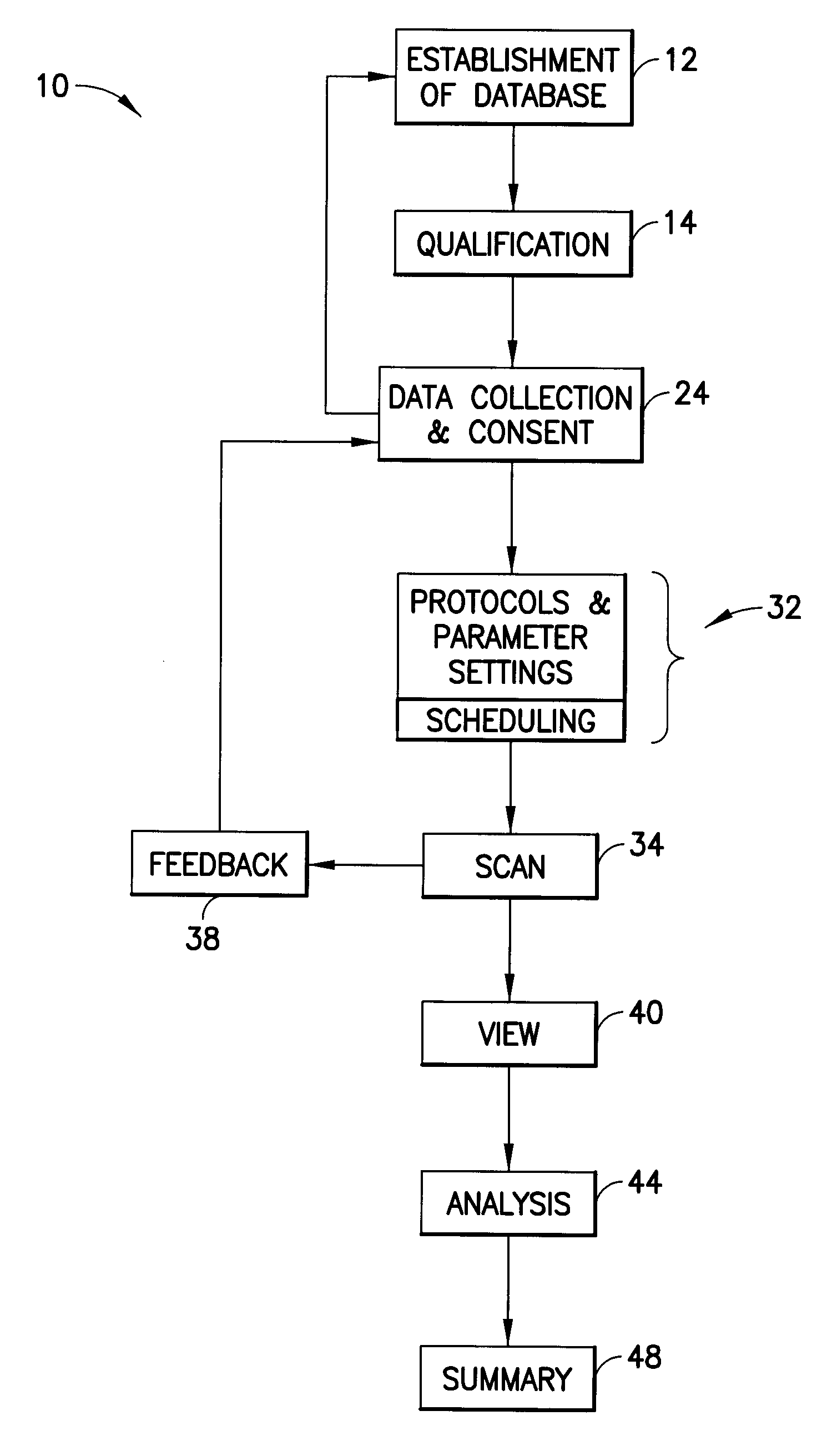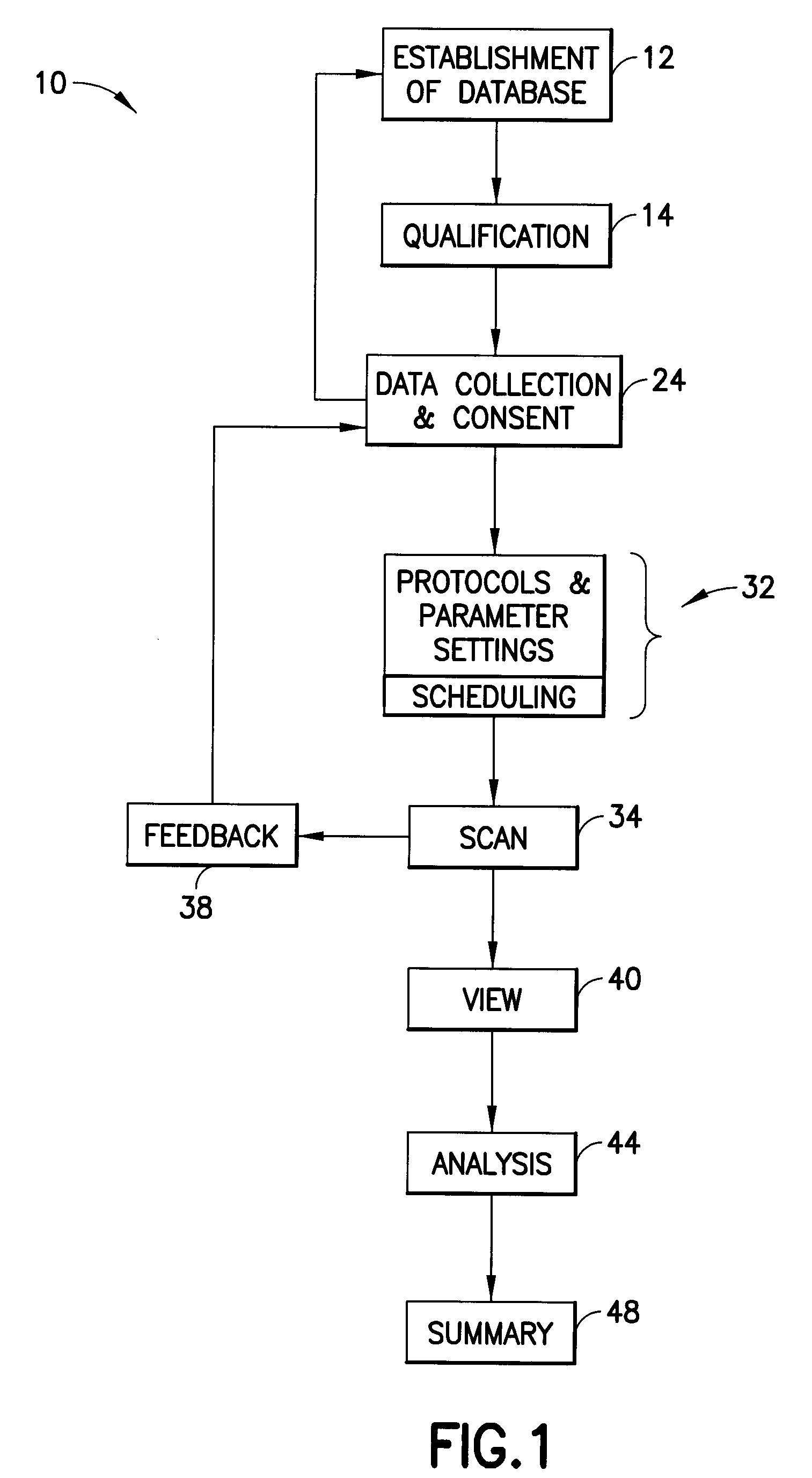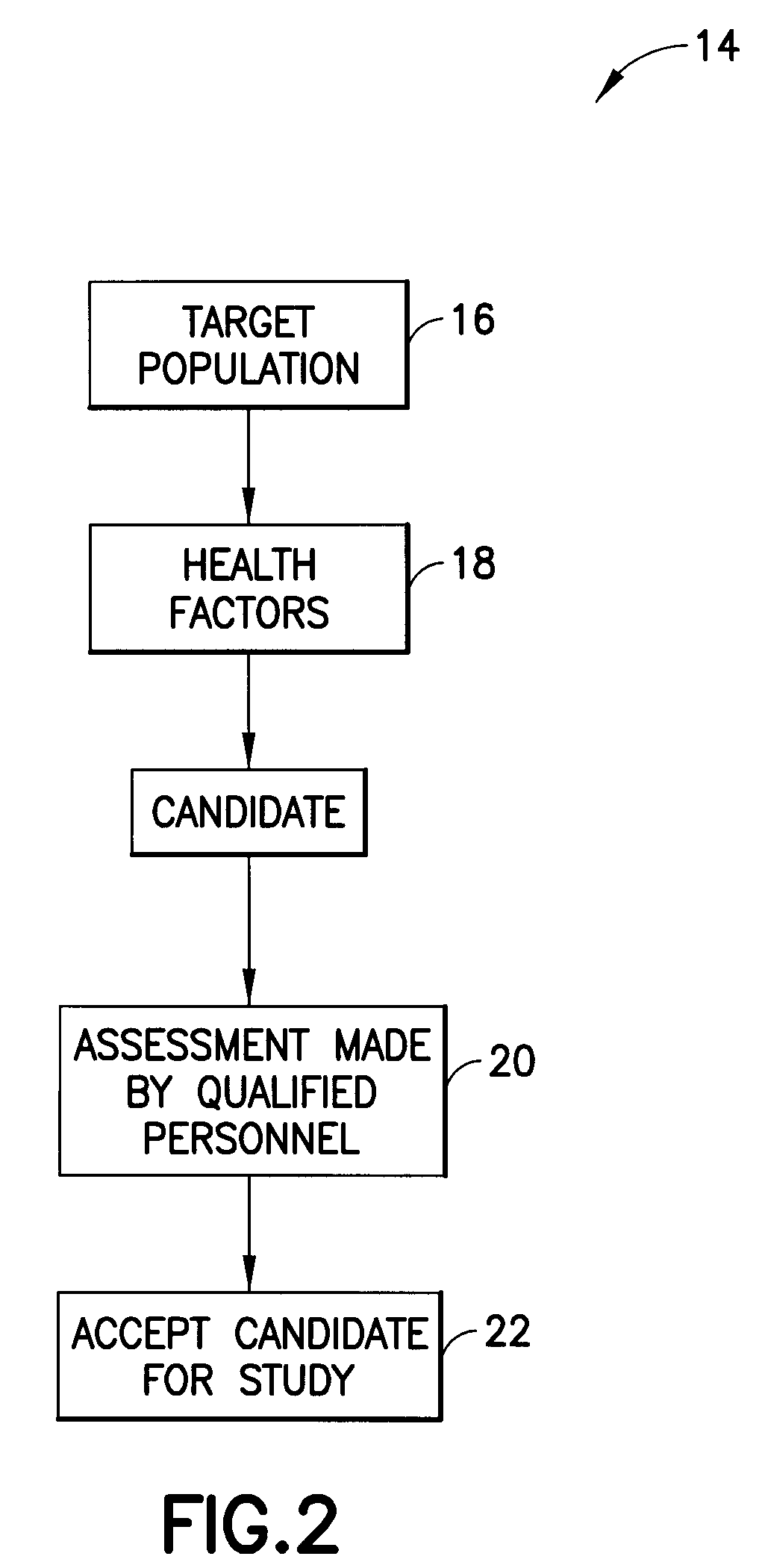Image analysis processes and methods for the evaluation of tampon performance
a technology of image analysis and tampons, applied in the field of process and method for the study of feminine hygiene products in vivo, can solve the problems of significant health or safety problems, the method of using mri to study tampons in vivo, and the strength of the magnetic field is too low, so as to improve the design of tampons, improve the understanding of how tampons affect the body of women, and achieve real and accurate measurements
- Summary
- Abstract
- Description
- Claims
- Application Information
AI Technical Summary
Benefits of technology
Problems solved by technology
Method used
Image
Examples
example 1
Tampon Analysis Study Protocols and Test Parameter Settings
[0061]A number of commercially available, non-deodorant tampons are scheduled for study using MRI. Testing is performed on eight different participants, namely, three different teenagers (ages 13-20); two multiparous women (any age, provided that they have had at least two children); and three perimenopausal women (ages 42-52). The women who volunteer to be participants should be tampon or tampon / pad users. Each participant will be scanned three different times, using three different tampons.
[0062]An inquiry is made to collect information regarding age, race, height, weight, right- or left-handedness, feminine hygiene product preferences (and any other information deemed relevant) for each of the eight participants. Information indicative of the tampon product to be tested (e.g., absorbency grade, size, and the like) for each participant is recorded. Each participant preferably utilizes the tampon product that she normally u...
example 2
Determination of Position of Tampon in Body
[0069]Referring now to FIGS. 7 and 8, the height of a tampon in the body of the participant was determined using sagittal plane images. The images are sagittal scans taken of two different women. Both women were in their early 20's. The images suggest that tampon placement in the body can vary from woman to woman. Variation in tampon placement can contribute to variations in the absorption of menses.
[0070]As can be seen in FIG. 8, absorption of the menses indicates pockets of alternating light and dark color on the image, which often causes the image of the tampon to blend into the background.
[0071]Referring now to FIG. 9, a coronal image illustrates the orientation of the tampon in the body of the test participant.
[0072]Referring now to FIG. 10, a coronal scan of a tampon (in this case a commercially available TAMPAX ORIGINALS tampon) is shown to bend in the body of the participant to conform to the vaginal shape.
example 3
Segmenting of the Vaginal Cavity Using Software
[0073]The 3D-DOCTOR software program (a screen print is shown in FIG. 11) utilizes tracing to allow for the segmenting of the vaginal cavity and uterus of a participant via scans made prior to the insertion of the tampon into the vagina. Segmenting allows for the generation of an accurate CAD file for the creation of a three-dimensional modeled vagina that illustrates the correct anatomy.
[0074]Referring now to FIG. 12, a three-dimensional profile includes separately segmented pictures of a tampon and vagina of a 30-year old participant taken four hours after insertion of the tampon into the vagina. The tampon (in this case a commercially available O.B. SUPER tampon) and was placed slightly on the left side of the vagina and a short distance up in the vaginal formix. Also shown in the segmented pictures is the participant's bladder.
[0075]Referring now to FIGS. 13-15, views of a tampon (in this case a commercially available BEYOND tampon)...
PUM
 Login to View More
Login to View More Abstract
Description
Claims
Application Information
 Login to View More
Login to View More - R&D
- Intellectual Property
- Life Sciences
- Materials
- Tech Scout
- Unparalleled Data Quality
- Higher Quality Content
- 60% Fewer Hallucinations
Browse by: Latest US Patents, China's latest patents, Technical Efficacy Thesaurus, Application Domain, Technology Topic, Popular Technical Reports.
© 2025 PatSnap. All rights reserved.Legal|Privacy policy|Modern Slavery Act Transparency Statement|Sitemap|About US| Contact US: help@patsnap.com



